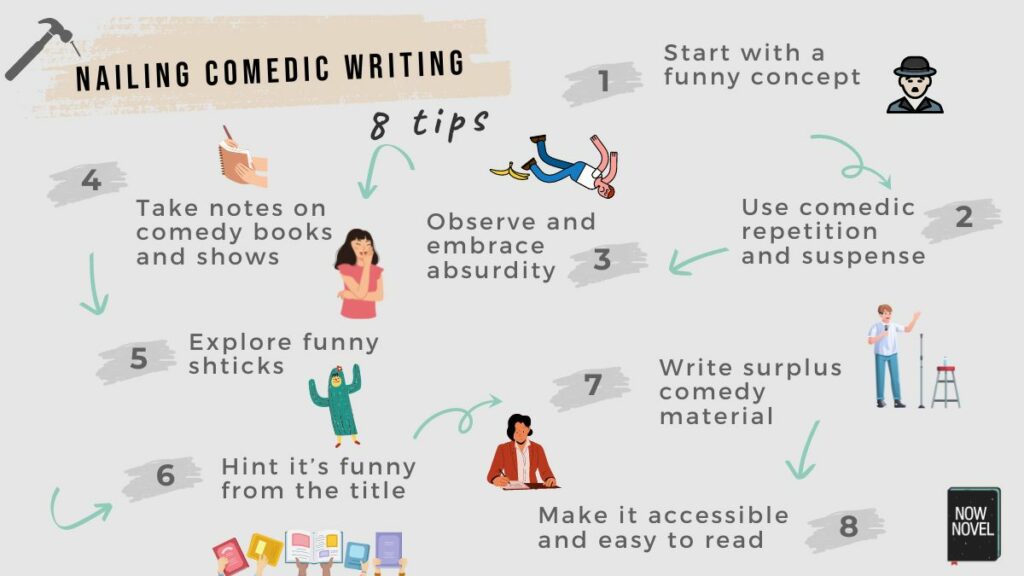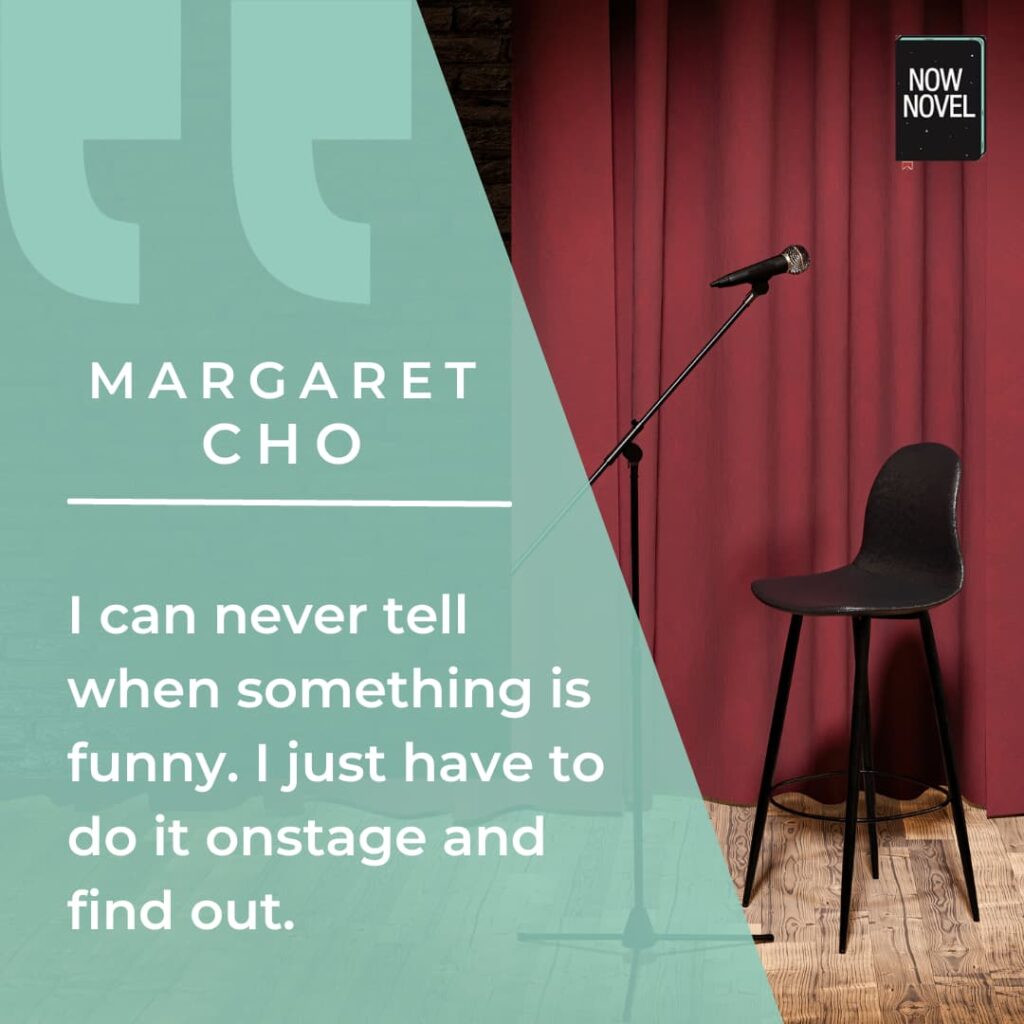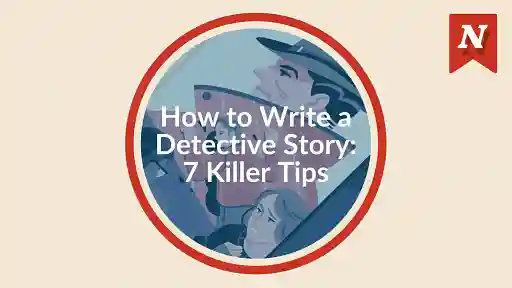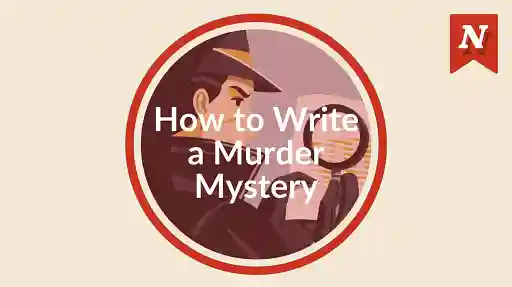Funny, comedic writing is hard. Senses of humor vary in what people find amusing. Read a guide to how to write a funny story. Explore types of humor and comedy genres, humor writing tips from stand-up and comedy icons, and examples of different types of comedy writing. Bear in mind that these funny ideas and elements can be incorporated into just about any genre as well. The funniest writing comes from universal experiences that we are all familiar with.
14 types of comedy
One of the challenges of comedic writing is that there are so many distinct types of humor. Read a quick breakdown of fourteen types:
- Jokes are short stories or one-liners that consist of a setup and a punchline. For instance, 'My grandfather has the heart of a lion and a lifetime ban at the zoo' (via Bored Panda).
- Situational comedy or sitcom is a type of humor that draws laughter from funny and absurd situations (e.g. farce which often features ludicrously absurd situations). Michael Frayn's play Noises Off (1982), in which a technical rehearsal for a play keeps going wrong, sending its director into a rage, is a great example.
- Romantic comedy or romcom is a comic movie (or book) that finds humor in the development of a romantic relationship. When Harry Met Sally (1989), starring Meg Ryan and Billy Crystal, is a genre-defining romcom.
- Dark comedy, also known as black comedy, is humor that finds the funny side in darker or more tragic subject matter. Caimh McDonnell's A Man with One of Those Faces (2016) combines crime, murder and comedy.
- Cringe comedy is a type of humor that derives its laughter from awkward characters and situations, guilty pleasure, and personal distress. It falls under dry humor. Larry David's HBO show, Curb Your Enthusiasm, is a peak example of this.
- Satire is a type of comedy that uses humor, irony, and exaggeration to expose society's stupidity, bigotry, or other vices. Viet Thanh Nguyen's The Sympathizer is an example that uses humor to satirize but also indict the Vietnam War.
- Parody is the imitation of a writer's style or genre with intentional exaggeration for comic effect. Tim Burton's alien invasion spoof, Mars Attacks!, and Henry N. Beard and Douglas C. Kenney's Bored of the Rings, which satirizes Tolkien's epic fantasy cycle, are examples of this.
- Self-deprecating humor is when a comedic writer pokes fun at themselves. For example, they might use embarrassing experiences as material. David Sedaris' comedic memoir/essays often find humor in his OCD, embarrassing childhood stories, and other self-deprecating subjects.
- Insult comedy is humor based on true, painful, or exaggerated observations about others. The comedy roast is a perfect example of this. Jeff Ross' roast of Bruce Willis showcases this type of humor [warning: Strong language].
- Physical comedy is humor that uses the body, techniques such as mime or clowning for laughs. The films of Charlie Chaplin that use slapstick are an example.
- Surreal comedy is humor that uses absurdism or dream-like logic for laughs, such as Monty Python's 'dead parrot' sketch.
- Wordplay plays with language, such as a pun or double entendre. Ex: Mae West's quip: 'I never worry about diets. The only carrots that interest me are the number you get in a diamond.'
- Blue humor is adult, often provocative, sexual or deliberately in bad taste. For example, Mae West's bawdier inversion of a popular saying, 'A hard man is good to find.'
- Anti-humor uses bathos or anticlimax. The expected punchline is replaced with something simple, unfunny, or painfully obvious. The so-called 'dad joke' is an example - 'A man walks into a bar ... ouch.'
Comedy genres in literature
What are the main comedy genres in books?
Satirical or political comedy
Think of Joseph Heller's 1961 satirical anti-war novel Catch-22. It follows anti-hero Captain John Yossarian and examines the absurdity of war and military life:
What is a country? A country is a piece of land surrounded on all sides by boundaries, usually unnatural. Englishmen are dying for England, Americans are dying for America, Germans are dying for Germany, Russians are dying for Russia. There are now fifty or sixty countries fighting in this war. Surely so many countries can't all be worth dying for.
Joseph Heller, Catch-22.
Comic essays and memoir
Comedic essays and memoir remain popular. Geoff Dyer is an example of an author in this category, having authored books such as Out of Sheer Rage: Wrestling with D.H. Lawrence, about all the ways the author avoided writing a book about the writer D.H. Lawrence. It is part- catalogue of procrastination, part-travelogue:
London is the worst. Lawrence realised this in 1916: London was ‘so foul’, he reckoned, that ‘one would die in it in a fortnight’. Since then it’s got even worse. Now it’s the world capital of flu. The sky in London drizzles flu, it rains flu. People from all over the world go there and get flu. Whether they come to see the changing of the guard, or to take ecstasy at raves, they all end up getting flu.
Geoff Dyer, Out of Sheer Rage: Wrestling with D.H. Lawrence.
Some non-fiction writers are just naturally funny, such as Bill Bryson and David Sedaris. Here the comedy is in the writing. Let's look at an example from Bryson's The Road to Little Dribbling:
One of the things that happens when you get older is that you discover lots of new ways to hurt yourself. Recently, in France, I was hit square on the head by an automatic parking barrier, something I don’t think I could have managed in my younger, more alert years.
There are really only two ways to get hit on the head by a parking barrier. One is to stand underneath a raised barrier and purposely allow it to fall on you. That is the easy way, obviously. The other method – and this is where a little diminished mental capacity can go a long way – is to forget the barrier you have just seen rise, step into the space it has vacated and stand with lips pursed while considering your next move, and then be taken completely by surprise as it slams down on your head like a sledgehammer on a spike. That is the method I went for.
Comic genre spoof and parody
Many funny books spoof a genre and its silliness, clichés, habits.
In Bored of the Rings, Frito (Frodo's namesake) wonders whether he could just throw the One Ring down a storm drain and be done with it.
Comic fantasy is one type of genre hybrid that often uses parody. Sir Terry Pratchett is widely considered the master in how he lampoons elements of the fantasy tradition, such as outlandish worldbuilding elements, fantasy races, and plot tropes.
The humor category on Amazon shows just how eclectic comedy is in its inspirations and niches. From 'Business & Professional' through 'Cooking' to 'Urban Legends'.
Many of the current humor bestsellers (as of March 2023) have some kind of censored curse word in the title (contemporary comedy often falls back on the unsubtle art of not giving a f**k).
How to write a funny story: From comical concepts to comedy gold
As the types of comedy writing outlined above remind us, comedic writing runs from the deliberately lame to the edgy and risqué.
Read tips on how to write a funny story with ideas from of comedic writing in English in books, film and TV.
-
Start with a funny concept.
For a story to be funny, the concept must first hold enough potential for comedy.
-
Develop comedic repetition and suspense.
Repetition and suspense are common ingredients of funny writing (and dramatic irony).
-
Observe and embrace absurdity.
Zhubin Parang (producer and writer on The Daily Show) says 'the visceral 'huh?' is a key comedy element.
-
Take notes on comedy books and shows.
How and why do your favorite comedy books, TV shows and films make you laugh? Take notes.
-
Explore funny shticks.
A shtick is a comic routine, style of performance or gimmick (e.g. Diane Morgan's shtick pretending to be an uninformed, idiotic interviewer).
-
Write surplus comedy material.
In comedic writing, producing more material than required lets you choose the best jokes.
-
Hint it's funny from the title.
Browse through comedy titles for ideas (such as David Sedaris' Me Talk Pretty One Day or the Tolkien spoof Bored of the Rings).
-
Make it accessible and easy to read.
There's that saying 'brevity is the soul of wit'. Don't make the path to the punchline too convoluted or meandering (unless that in itself is the joke).

Let's expand on the comedic writing tips above.
Start with a funny concept
Just as a magical fantasy story starts with a fantastical concept, a laugh-out-loud story starts with a funny concept.
Scott Dikkers, founder and longest-serving editor-in-chief of the satirical news site The Onion, wrote a series of guides to comedic writing.
On comedy concepts, Dikkers says:
When you write humor, the core concept you're writing about has to be funny. The core concept is, in fact, the most important part of your writing […] You need to be able to express your concept in a single line or sentence, with as few words as possible.
Scott Dikkers, How to Write Funny: Your serious, step-by-step blueprint for creating incredibly, irresistibly, successfully hilarious writing, location 162.

How can you find a funny concept?
There are many ways to develop a comedy idea:
- Draw from life. What's an absurd or funny-in-hindsight situation or experience that's left you in stitches?
- Go where there's feeling. What drives you nuts? What has always struck you as ridiculous, ludicrous, bizarre, infuriating? Many comedic writers turn bugbears and pet peeves into comedy routines. See Diane Morgan, 'Boys are Always Popular when they're Murdered', for example. Or Hannibal Buress on why jaywalking is a 'fantasy crime'.
- Read humor and drama. The wider the web of your inspiration, the more sources to draw on and the wider your field of reference.
- Play with comedy subtext. Comedy has subtext. For example, 'getting' a joke such as that Bored Panda joke about the grandfather who has the heart of a lion (and a lifetime ban from the zoo) requires us to understand the subtext (that 'to have the heart of' something has figurative and literal meanings). What laugh-bringing realization will your next funny line hinge on?
- Brainstorm funny 'what if' scenarios. What if a man tried to return a dead parrot to a pet shop (as in Monty Python), for example. What if absolutely everything at a funeral went wrong (to hilarious effect)?
Additionally, try writing your comedy concept as a single line as Dikkers advises. If you must explain the concept in paragraphs, it may be too convoluted.
Another important note to consider is that sometimes funny stories or anecdotes are funnier than actual jokes. See how you can incorporate these funny stories into your writing.
Joan Rivers, on channeling strong feelings into comedy:
Every comedian is furious. Age makes me angry. I'm unhappy at not being able to open packages anymore. I'm angry that libraries have gone. I hate children on planes. I'm very shallow, so they tend to be little things. To be honest, I think I was probably angry the day I was born, you know, about diapers or something.
Joan Rivers, interviewed by The Jewish Chronicle, October 29 2010.
Comedy writing exercises
To find a funny story idea, try this exercise by humorist Donna Cavanagh:
Write down memories of past embarrassing moments and see if you can turn mortification into mirth.
Donna Cavanagh, How to Write and Share Humor: Techniques to Tickle Funny Bones and Win Fans , 2016, Location 415.
Another exercise to find a funny story idea: Write down three things you find funny. Imagine a scenario involving who, what, why, where and when for each. Try to write a funny story idea as one sentence.
Example: 1. Funny orchestra mishaps [Ed's note: Funny incidents such as a brass player sneezing into their trombone]. 2. Awkward situations that just get worse. 3. Human foibles.
Scenario sentence: A trombone player who's allergic to dust is called upon to play in a historical building last swept in 1983 and the concert is a series of mishaps culminating in him sneezing into his trombone in the slow movement.
Develop comedic repetition and suspense
A lot of the success in comedic writing for stage or film lies in comedic timing. What are two kinds of timing in humor writing, two building blocks of funny stories? Comedic repetition and suspense.
Repetition in comedic writing
Repetition at its simplest level is like the 'knock-knock' joke's structure of call and response: 'Knock-knock... who's there?'.
In comedic writing, elements that add hilarity through repetition include:
- Characters' catchphrases, tics, and quirks. The way Elmer Fudd's difficulty saying 'r' in Looney Tunes, for example, makes it funny when he starts ranting about Bugs Bunny and 'wascally wabbits'.
- Repetition with surprise or comical circularity. For example, in the cult TV series Twin Peaks, James asks Donna, who's visiting him in the sheriff's holding cells, "When did you start smokin'?" when she lights up a cigarette. Donna replies, "I smoke every once in a while. Helps relieve tension." James asks, "When did you get so tense?" to which Donna replies, "When I started smoking."
- Running jokes and gags. Popular in humor writing for TV series in particular, running jokes (such as Buster Bluth's extra-mural lessons that haven't taught him much at all in Arrested Development) get finessed and added to with repetition, brought up and revisited in new contexts in a way that adds to their hilarity.
- Recurring theme. For example in the 1990s/early 2000s sitcom Frasier, it's clear to us, and the rest of the cast, that Frasier's brother, Nyles, is smitten with Daphne. But Daphne remains unaware of this, and this theme runs throughout the series until –spoiler alert! – Daphne and Nyles finally get it together.
Suspense and nervous laughter
Comedic writing shares something in common with mystery/thriller writing: The build up of anticipation, or suspense.
Campy slasher films, a sort of comedy-horror genre, often make audiences laugh. It's the nervous laughter that ensues when characters make foolish choices that make viewers want to yell at the screen ('Don't go into that creepy house!). 'Person makes stupid choice' is an endless fount of comedy ideas.
Suspense in comedy builds from waiting for the punchline or left turn, the outcome of that choice.
If suspense in dramatic writing means anticipating the bad, in comedy, it's anticipating the hilariously or embarrassingly bad (for example, waiting for parents' reaction to their new son-in-law accidentally breaking a beloved relative's urn in Meet the Fockers).
Observe and embrace absurdity
Comedic writing draws on observing - recognizing - the absurdity of everyday life.
It may be the Sisyphean (a task that can never be completed) aspect of work or relationships, for example.
In an existential comedy scenario, a chef perhaps keeps getting a meal sent back to the kitchen by a fussy table with exceptionally petty demands, until she explodes in a comical or cringeworthy way.
Many jokes in stand-up and other forms of comedy writing have become clichéd (such as jokes about airline food being terrible) because they repeat what we know to be true. Fresh humor, by contrast, often makes the familiar experience or scenario (e.g. 'meeting the parents') seem newly absurd.
Often in comedic writing, there's a thin line between pain and laughter. The schadenfreude or voyeuristic pleasure of others' misfortunes becomes funny because its relatable. We feel the pain of the kid bowled over by the Labrador on the beach.
Ed's note: A friend would tell the funny story of going to an ice cream shop where a very disinterested shop worker leant on the counter, chewing gum.
"You want a cone or a cup?" she muttered, after he'd made his choices of flavors.
"Cup, please," he said.
She paused, chewed a bit. "Don't have."
Bizarre and absurd situations are goldmines for existential and other types of comedy showcasing human foibles, miscommunications and vices.
Comedy writer and producer Zhubin Parang speaks of the 'visceral 'huh?'' moment - 'situations that don’t go the way they should, or people who respond to an event or idea in a different way than they should', as in the ice cream shop example above.
This is something to mine for funny writing ideas.
Take notes on comedy books and shows
🗣️ What are your favorite funny books and TV shows?
Tell us your recommendations in the comments. You can learn a lot from comedy shows and stand-up comedy you enjoy about comic writing devices such as setup and punchline, or the unexpected turn. Tell us a funny anecdote.
Comedic writing exercise: The anatomy of laughter
Take a piece of funny writing or a stand up segment and ask the following questions:
- What devices is the writer using for humorous effect? Is there wit and wordplay? Satire? Clever repetition? Irony?
- How does the writer use language to comedic effect? Is there a mix of high and low (e.g. formal and slang) language? Do they curse? Is there exaggeration or understatement?
- What part of the story or script did you find funniest? Why? Was it an unexpected word, phrase, outcome, revelation? An everyday object or experience the comic reframed in a new light?

Explore funny shticks
The word 'shtick' means 'a gimmick, comic routine, style of performance, etc. associated with a particular person' (Oxford Languages). It is of Yiddish origin, from the German word for 'piece', stück.
In comedic writing, creating a character with a shtick supplies a range of scenarios to fill with funny material.
In the series Cunk on Earth, for example, Diane Morgan's shtick is the setup that she's an uninformed interviewer narrating a historical documentary about human history - art, culture, religion, conflict.
Her fictional character, Philomena Cunk, asks Oxford and Cambridge professors questions such as, 'When the Egyptians built the pyramids, did they start at the top or the bottom?'
There are several funny aspects to the character that make up the shtick, including:
- Random anecdotes she throws in about 'my mate Paul' who gets into all kinds of tricky situations
- Deliberate mispronunciations (such as pronouncing 'The Bible' as 'The Bibble' or the 'Soviet Union' as the 'Soviet Onion')
- Responding with slang and 'low register' to academic interviewees who use much more formal language (e.g. 'Yer jokin'!' or 'Are you havin' a laugh?)
- Running bits/gags (every episode references and plays a segment of Belgian producers Technotronic's song 'Pump Up the Jam', with funny and nonsense text overlays stating random or made-up facts)
Think of one of your favorite comical characters from fiction. What sayings, habits, physical gestures, and other quirks make up their 'shtick'? Think of Douglas Adams' aliens, who torture humans with their terrible poetry.
Talking of characterization, remember that even humor writing has to have realistic characters. TV sitcoms often have really silly characters, too silly to be believable. Think of the 1980s sitcom, The Golden Girls, for example. Rose Nylund (played by Betty White) is the daffy one, rather too gullible and naïve, which played into the humor of the show. While popular with audiences, her characters borders on being on the wrong side of believable.
Write surplus comedy material
A good piece of advice on how to write a funny story Dikkers gives in his comedy manuals is this: Write more material than you need.
Just as stand-up comedians don't share the jokes that don't make it on stage, comedic writers - whether writing fiction or screenplays - don't share the pages that didn't make it to the final draft or production.
Blooper reels are extra.
The benefits of brainstorming and churning out ideas, multiple options, are:
- Digging deeper than the 'easy' laughs. Churning out lines gets the obvious ideas out the way. Comedian and actress Wanda Sykes shared with Kevin Hart in a podcast that her audience expects more than the easy, obvious joke (and that bringing her self - her politics - to her comedy helped her create funnier, more original material)
- Surplus comedic material to select the funniest jokes. Zhubin Parang, who was head writer for Comedy Central's The Daily Show with Trevor Noah, says, 'You always need to tighten, tighten, tighten. Every first draft has way too many words, extra thoughts or side ideas.' Writing extra material gives this tightening process more material to work with
Hint it's funny from the title
Think of titles of comedic fiction and non-fiction, such as:
- The Hitchhiker's Guide to the Galaxy by Douglas Adams
- Wishful Drinking by Carrie Fisher
- A Supposedly Fun Thing I'll Never Do Again by David Foster Wallace
- Sombrero Fallout by Richard Brautigan
These are titles with wordplay (e.g. Fisher's play on the phrase 'wishful thinking'), absurd humor (the idea of a hitchhiking guide to a place so gargantuan), droll and random humor.
Your title is an opportunity to both signal that your book is a work of humor writing, and to signal its contents (e.g. Fisher's memoir hinting at the memoir's one subject of substance addiction).
Make it accessible and easy to read
Finally, effective comedic writing doesn't need 'thee' and 'thou' and highfalutin' convolution. (Unless it's the Ben Elton -penned sitcom about Shakespeare and his trials and frustrations, Upstart Crow).
There is an accessibility of style often to comedic writing. We mostly get the joke (without excessive explanation). Except in a brand of 'random' humor that relies more on a 'visceral huh' than 'setup' and 'punchline'.
Mostly, style services the humor. Savage, biting satire is concise and punchy. Screwball and madcap comedy goes off the rails more.
In the Irish comedy series Derry Girls, there's a wordy uncle named Colm who drives everyone mad with his long-winded, meandering storytelling.
This 'shtick' recurs as a plot device (the group of school friends who are the main characters use him to get out of being arrested for trespassing, for example).
The humor here is in how inaccessible, uninteresting, and infuriatingly boring Colm's stories are. It's a good reminder that there's always an exception to the rule. However, the situational humor when characters are stuck with Colm is easy to read - the absurdity of getting trapped in a conversation you don't want to have is a relatable, comedic situation.
Think how you can slip one-liners into your story. Even if a story is serious and gritty, you can lighten up the tone by inserting humorous bits and pieces in a story. Clever wordplay and puns can add humor to your writing. Look for opportunities to play with language, incorporate double meanings, or create humorous juxtapositions of words.
What is your style of humor in your every day life? Use your natural sense of humor. Think how you can inject that into your own writing.
Mastering comedic writing will not only level up your overall writing, but can also lead to paid opportunities, whether you land ghostwriting jobs for TV or you're putting yourself out there as a comedian up on stage.
🗣️ What's a funny book or show you found relatable and why? Tell us in the comments
Join Now Novel for writing feedback on your next humor piece, writing webinars, story outlining tools and more.










This was so fun! I especially enjoyed “highfalutin’ convolution” 😁 Here’s one of my favorites: "Every book is a children's book if the kid can read!" ― Mitch Hedberg
Margriet - About 2 years ago
Haha, I love that, Margriet. Thanks for sharing.
Jordan - About 2 years ago